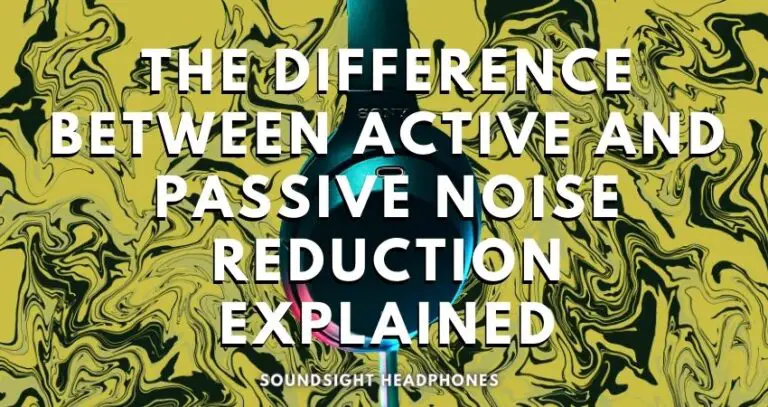Audio is a term that is often used interchangeably with sound, but they are not the same. However, since they are different it is important to understand the difference between audio and sound. Sound, in essence, is simply vibrations that are traveling through materials. A car horn will create sound waves through the air for example. Audio on the other hand refers to technology that allows us to hear these sounds which can come from natural or human-made sources.
To put it simply:
- Sound is vibrations through materials, the Action
- Audio is the End result, the technology to hear sounds coming from natural or human-made sources
There are sounds and technologies for hearing them; the concept of audio refers to these. Sound often travels through the air, but it can be carried by other materials, such as water. It also travels through solid matter, which is why audio engineers strive to soundproof their studios for recordings without unwanted noise.
To get more in depth and bring this to a more comprehensive answer, we’ll write some examples with both audio and sound in a sentence.
- What Makes One Earbud Louder Than the Other
- The Best Ways to Fix Unbalanced Headphones
- Conclusion
Audio in a sentence:
- Audio file format
What is an audio file?
An audio file is a particular type of recording, usually digital, that includes both the soundtrack recordings and the surround sound effects of movies, TV programs or video games. Similar to other digital files it contains “data” in the form of 0s and 1s that can be translated into sounds or pictures
The data in this file is what makes up the sound of the movie. Audio files also come in different formats. The most common is MP3, but there are also WMA and FLAC. Audio formats define the quality of the audio, which makes the sound better or worse in quality.
- Audio engineer
What is an audio engineer?
An audio engineer is a person in charge of recording, processing and mixing sounds to make sure they sound good when heard on devices such as headphones, radios and televisions. The audio engineer uses audio equipment to manipulate the sound in different ways. For example, by recording different parts of the sound separately and mixing them all together to make sure they sound good together.
- Audio technology
Spatial audio via virtual surround sound (Dolby Atmos)
What is spatial audio?
Spatial audio is sounds that are created physically in the air by sound waves or virtually through surround sound technologies like Dolby Atmos. Virtual spatial audio is more accurately described as 3D audio because it uses multiple sound sources from three axis instead of two as with other VSS technologies. This is important because the sound will appear to come from different directions.
What is High Resolution Audio (HRA)?
HRA (also known as 24 bit/192 KHz audio) is a term to describe audio files that includes all of the audio information in each sample at 24 bits.
- Audio Upscaler software
What is an audio upscaler?
An audio upsampler or upscaler can be defined as a software that converts, replicates or emulates high definition media. In simple terms, it’s a piece of computer software that makes low-res audio files look and sound as if they were high-res files.
- Portable audio device (Sony Walkman)
What is a portable audio device?
A portable audio device is an electronic device used to store and play back music either on the move or at home. Portable audio devices are sometimes referred to simply as ‘walkmans’ after a popular 1980s model of portable audio cassette player made by Sony. Portable audio devices are also known as audio players or MP3 Players despite supporting additional audio formats than MP3.
- Audio book (Digital)
What is an audio book?
An audio book (digital) is a version of a book that includes either CDs or downloadable audio files available. The end result is that you can listen to the audio book at your own convenience using any audio device such as an iPod or a MP3 player.
Sound in a sentence:
- Sound pollution
What is noise pollution?
Sound or noise pollution is a term used to describe the unwanted sounds generated by machines, vehicles and people that can interfere with the lives of people living near large numbers of industrial facilities. Online maps can offer you an overview of the level of sound pollution as a value of decibels (dB) of noise measured in A-Weighted Equivalent sound pressure level for 24 h.
This website https://maps.dot.gov/BTS/NationalTransportationNoiseMap/ shows that the most noise polluted locations are in big urban areas like in New York near EWR and JFK airports.
- Soundproofing
What is soundproofing?
Soundproofing is a term that describes the process of providing good acoustics to a room or building by reducing unwanted sounds coming from outside. There are two types of sound absorption which are known as direct and indirect. Indirect soundproofing
Indirect soundproofing is the process of providing a dead space between two surfaces by means of vibration damping. It is commonly used in buildings because it less expensive
Direct sound proofing is achieved by filling air cavities with absorbent material. For example, soundproofing can be achieved through the use of acoustic panels that absorb unwanted which is turned into heat. It is commonly used in recording studios as well as for residential homes.
- Sound quality
What is sound quality?
Sound quality is the measure of how good the sound in something sounds. The level of audio fidelity or sound quality depends on different factors like: drivers size, drivers type, acoustic design, materials used in the drivers construction, frequency range, total harmonic distortion and much more.
- Sound effect
What is sound effect?
Sound effects are sounds that are produced by movie sound engineers through objects and instruments. These instruments are not digital, hence the name “sound effects”. Sound effects are used to give a sense of realism to the movie. For example, the sound of a thunder using
The effects generated by computers, game consoles and digital audio players are called audio effects because they’re digital. They’re considered audio effects because they’re generated by software, not by physical instruments. However, like other sounds, they serve to enhance the movie/gaming experience by adding entertainment value giving the illusion of reality. Sounds that imitate gun shots, steps, explosions are some of the most common audio effects.
Other examples of audio and sound in a sentence:
- “I want to buy a pair of good quality headphones for better audio quality.” – Good audio, or good sound? The use of the word “audio” tells us that it refers to the technology used by the headphones, perhaps of a wireless headphone.
- “The soda machine made a loud crackling sound.” – This is a sound that was produced by the machine when it dropped a soda or physical result, not the result of technological audio output.
- “I want to emphasize the importance of the audio quality of good acoustic guitars.” – Here, the word “audio quality” is used. The word “audio” is not meant to be used here because it is not used in the context of technology or a digital acoustic guitar.
- The term “audio effect” refers to a sound that is produced by the computer or other device when activated or responded to.” – The word “audio effect” tells us that the sound output is digital, not physical.
- Sound effects are acoustic effects produced by vibrations or movements that are captured by the microphones and translated into audio signals. – The word “acoustic” tells us that this is referring to the physical effect rather than the digital one. Film sound engineers often create sound effects through instruments and objects without using computers. As they’re produced through natural means, these effects are; therefore, called “sound effects.”
- “As you can see from the diagram, this program is capable of doing professional audio mastering.” – The words “audio mastering” are used to refer to the process of improving the quality of sound through digital modification of the original recorded sound.



